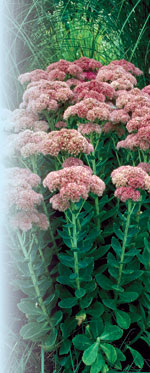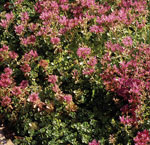Remarkable and Versatile Sedums
go.ncsu.edu/readext?235947
en Español / em Português
El inglés es el idioma de control de esta página. En la medida en que haya algún conflicto entre la traducción al inglés y la traducción, el inglés prevalece.
Al hacer clic en el enlace de traducción se activa un servicio de traducción gratuito para convertir la página al español. Al igual que con cualquier traducción por Internet, la conversión no es sensible al contexto y puede que no traduzca el texto en su significado original. NC State Extension no garantiza la exactitud del texto traducido. Por favor, tenga en cuenta que algunas aplicaciones y/o servicios pueden no funcionar como se espera cuando se traducen.
Português
Inglês é o idioma de controle desta página. Na medida que haja algum conflito entre o texto original em Inglês e a tradução, o Inglês prevalece.
Ao clicar no link de tradução, um serviço gratuito de tradução será ativado para converter a página para o Português. Como em qualquer tradução pela internet, a conversão não é sensivel ao contexto e pode não ocorrer a tradução para o significado orginal. O serviço de Extensão da Carolina do Norte (NC State Extension) não garante a exatidão do texto traduzido. Por favor, observe que algumas funções ou serviços podem não funcionar como esperado após a tradução.
English
English is the controlling language of this page. To the extent there is any conflict between the English text and the translation, English controls.
Clicking on the translation link activates a free translation service to convert the page to Spanish. As with any Internet translation, the conversion is not context-sensitive and may not translate the text to its original meaning. NC State Extension does not guarantee the accuracy of the translated text. Please note that some applications and/or services may not function as expected when translated.
Collapse ▲
‘Autumn Joy’
Robert E. Lyons ©
The rocky cliffs in the mountains of North Carolina have some tough growing conditions. Shallow rock depressions contain a thin layer of soil that has formed or washed in over the years. The soil dries to a crisp between rains. Sedums, also known as stonecrops, will tolerate these conditions and this toughness makes them almost bulletproof in the garden.
North Carolina is home to 10 native or naturalized species of sedum. At least 8 species, originally hailing from Japan, China, Korea and the Caucasus Mountains, are available in local nurseries with 60 more species and numerous cultivars available by mail order.
Sedums are customarily divided into low-growing and upright species. Low-growing species such as Sedum acre (goldmoss) are traditionally used as groundcovers and in rock gardens. It is a good choice for green roof gardens, a popular trend on flat-roof surfaces to improve surface water runoff while cooling the building. Foliage can be the main reason for planting low-growing sedums but their flowers can be equally rewarding when selected carefully. The color varies from burgundy bronze on some species to pinks, whites, grays or greens on others. Flowers commonly are yellow or gold but Sedum brevifolium has pinkish white flowers and Sedum sieboldii ‘Dragon’s Blood’ has red flowers.

‘Dragon’s Blood’
Robert E. Lyons ©
Upright species include Sedum spectabile and Sedum telephium, also know as “live forever” or “orpine.” These are used as specimens or in a mixed perennial border. Flowers on the upright sedums are red, pink or white. These flowers will attract butterflies. The dried seed stalks are persistent and decorative through the winter. Sedum ‘Autumn Joy’ is a well-known upright cultivar with pink flowers that seem to be a favorite for bees. All sedums are suitable for containers.
Both the JC Raulston Arboretum (JCRA) Perennial Border and the outside areas of the Lath House contain sedums. Sedum ‘Vera Jameson’ has particularly lovely flowers that stand vibrantly against any surrounding green foliage.
David Goforth


